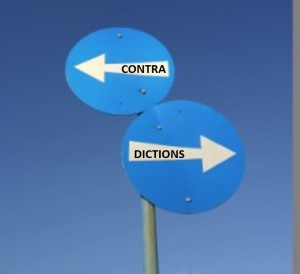 The gospel accounts of what happened at Jesus’ tomb on Easter Sunday are another favorite target of Bible critics. They point to several inconsistencies in the accounts’ details to illustrate that the gospels are inaccurate and contradictory.
The gospel accounts of what happened at Jesus’ tomb on Easter Sunday are another favorite target of Bible critics. They point to several inconsistencies in the accounts’ details to illustrate that the gospels are inaccurate and contradictory.
In fact, a close reading of the text shows neither inaccuracy nor contradiction. Those who use this as a means of tearing down the text’s credibility do so either because they’re biased and have never actually read the text, or because they are intentionally attempting to deceive others into believing that these accounts are contradictory.
The Alleged Contradiction:
Bart Ehrman is a well-known biblical critic. In a 2010 debate, he claimed that there are hundreds of contradictions in the gospel accounts and used the women at Jesus’ tomb as an example1. An overview of the gospel accounts, and their supposed contradictions, is below:
Matthew 28:1: “Now after the Sabbath, toward the dawn of the first day of the week, Mary Magdalene and the other Mary went to see the tomb.”
Mark 16:1: “When the Sabbath was past, Mary Magdalene and Mary the mother of James and Salome bought spices, so that they might go and anoint him.”
Luke 24:10: “Now it was Mary Magdalene and Joanna and Mary the mother of James and the other women with them who told these things to the apostles,…”
John 20:1: “Now on the first day of the week Mary Magdalene came to the tomb early, while it was still dark, and saw that the stone had been taken away from the tomb.”
At first blush, these accounts all seem to differ on which women attended Jesus’ tomb. Was it just Mary Magdalene and the other Mary, or were they joined by Salome? Or Joanna? Or did Mary Magdalene simply go by herself?
The Reconciliation:
This charge, and others concerning the tomb visit, make the common mistake of assuming “completeness.” That is, assuming that every account of something includes every detail about it.2 The gospel accounts were written by different authors, with different styles, for different audiences and purposes. Consequently, there are often differences in the details. These disparities can easily result from distinct personal experiences related to the same incident or from authors simply summarizing stories in different ways where they choose to include or exclude slightly separate details. It is important to note that differences do not equal errors or contradictions.
Specific to the women at the tomb, let’s review again what each gospel writer says. First of all, contrary to the charge, all writers agree that there were multiple women present. Matthew, Mark, and Luke specifically mention multiple women. John only mentions Mary Magdalene by name in 20:1. But in 20:2, the very next verse, as Mary recounts her experience to Peter, she says “they have taken the Lord out of the tomb, and we do not know where they have laid Him.” So John’s gospel indicates other women were present, even though he chooses to focus specifically on Mary Magdalene.
But do the gospels agree on which women were present? Matthew, Mark, and Luke all agree that two Mary’s were present. Mark includes Salome and Luke includes Joanna. However, Luke also says “and the other women with them” which would easily include Salome too. As mentioned before, John clearly indicates the presence of other women, but does not name them specifically. Ultimately, we have separate accounts that agree on multiple women, though none of them attempts to give a complete list of who they were. This is typical of eyewitness testimony. None of the accounts are identical to one another, but we shouldn’t expect them to be. They are, however, all consistent with one another.
Conclusion
We can say, at most, that the gospel accounts are incomplete in their details on this particular point, but we cannot say they are in error. This is an important distinction. Christians claim the Bible is accurate and without error. But they have never claimed that it provides every detail about every story. When critics make claims of error or contradiction based on this mistaken assumption, they hold the Bible to a false and unfair standard. The fact is, most of the allegations of error or contradiction in the New Testament accounts can be addressed just as easily as this one.
Notes:
- McGrew, Timothy, PhD. Alleged Contradictions in the Bible, Pt. 2, published online, 2012, pg. 8 http://www.apologetics315.com/2012/11/audio-resources-by-tim-mcgrew.html
- Ibid, pg. 6.
